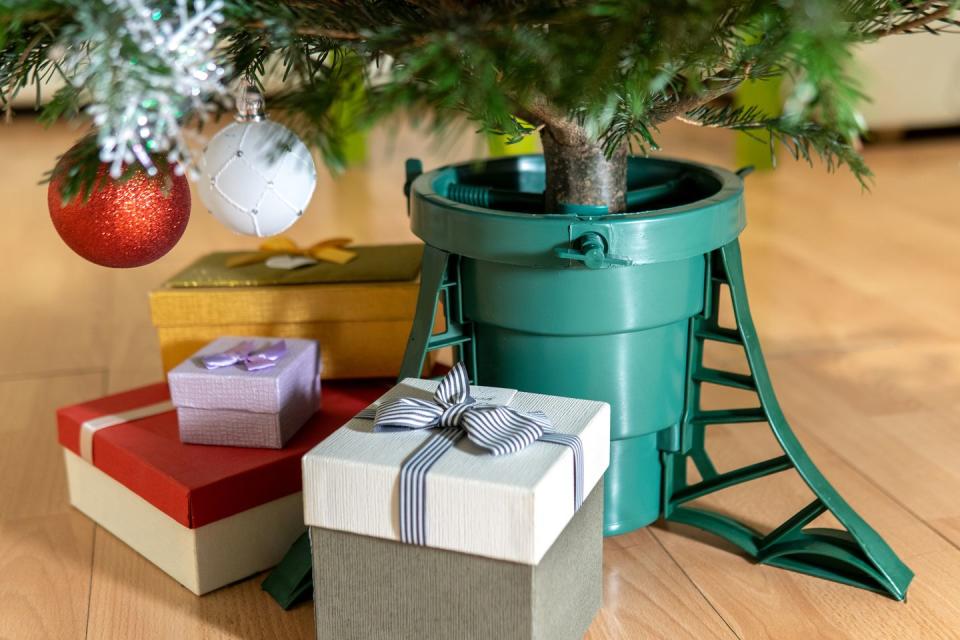Follow These Tips to Keep Your Christmas Tree Alive All December Long
For many of us, it's just not Christmas without a live tree! But if you worry about it dropping needles and getting crispy before Santa even shows up, we've got tips to ease your mind. There are ways to help your tree stay fresh and green all season long—including things you should never do to your tree—no matter what you've heard on social media. For starters, when possible, choose a fresh tree you cut yourself from a local Christmas tree farm; it's a fun activity that can become part of your family's new holiday tradition. Plus, live trees are farmed sustainably and can be recycled, which isn't the case with faux plastic trees. “Live trees have environmental benefits,” says Tim O’Connor, executive director of the National Christmas Tree Association. “Not only do they support local farmers, but they're a renewable resource that’s responsibly managed like any other crop.” With proper care, a live tree will typically stay fresh for up to a month.
Here’s how to ensure your Christmas tree stays as beautiful as it looks the day you bring it home.
Choose a healthy Christmas tree.
Run your hand along a branch and pull gently to see what comes off in your hand. A few needles may fall off, which is totally normal, but if you get a whole handful, find a different tree. The needles should feel soft and supple, not brittle, says O’Connor. The exception is spruces, which naturally have sharp, stiff needles.
Should you make a fresh cut on your tree?
Once you get your tree home, make a fresh cut if it's been more than a few hours since it was harvested, such as if you got it from a tree lot (where it may have been cut weeks earlier). “When the trunk seals over with sap, the tree cannot take up water any longer,” says O’Connor. “Saw about one half inch off the stump to create a fresh cut, and immediately place in water.” Cut it straight across, and don’t drill a hole in the base, because it doesn’t improve water uptake. And don’t whittle down the trunk to fit your stand; the outer layers of wood are the most effective at absorbing water. If your stand is too small, get a bigger stand!

How often should you water your Christmas tree?
Maybe every day so it doesn't go dry! “It generally needs watered every day for the first 7 to 10 days, then it will slow down after that,” says O’Connor. It may even need watered more than once a day, especially if it's an extra-tall tree. Remember, if you let your tree run out of water, the trunk will seal up again and that's it for the season (because you're not going to be able to take a fully decorated tree out of the stand to make another fresh cut!).

Get a Christmas tree stand with a large water reservoir.
Forget tiny stands that only hold a cup or so of water because you’ll have to check it too often. For instance, a tree with a four-inch diameter trunk may drink more than a gallon per day! Also, be sure the water level doesn’t go below the base of the trunk; with some Christmas tree stands, it may look like there's water but the trunk may no longer be submerged. Get down on your hands and knees and peer inside the stand to double-check.
Should you use Christmas tree preservatives?
Just say "no" to all those crazy ideas you've heard about for prolonging the life of your tree. Trees drink water in the forest, not juice, fertilizer, syrup, bleach, aspirin, sodas, vodka, or any sort of commercial preservative. In fact, university research has shown that the addition of Christmas tree preservatives does not improve needle retention—and in some cases, additives may actually harm the tree. That means it's just a waste of time and money.
Are LED Christmas lights better for your tree?
If possible, upgrade to LED Christmas tree lights that don’t get hot in order to reduce drying of your tree. Also, keep your tree away from heat sources such as fireplaces, heat vents, and direct sunlight.
Recycle your Christmas tree.
Lots of communities have organizations that pick up Christmas trees to make mulch for trails (find a recycling program here), or they may submerge them in water to provide fish habitat or stack them to prevent beach erosion. In your own backyard, use your tree as winter protection: Trim off boughs and layer over perennials or newly planted shrubs in your garden to protect them from severe cold.
You Might Also Like

